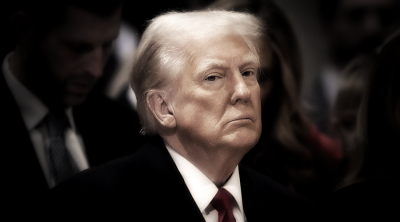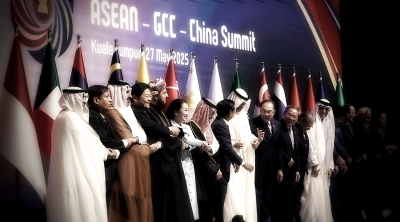
The image is unforgettable. Donald J. Trump, flanked by American flags and facing a national audience, concedes—in tone and substance—to what amounts to most of China’s core trade demands.
The markets, of course, cheered. The S&P 500 surged, and Asian bourses followed suit. But behind the numbers, a geopolitical tremor is rippling across the Pacific.
Xi Jinping’s defiance has paid off—and spectacularly so. For the first time in years, Washington, not Beijing, appears to be the party blinking in a high-stakes economic standoff.
What does this say about the balance of power in today’s multipolar world? More importantly, what lessons does it hold for the Global South?
The long game: Beijing’s strategy of strategic patience
From the outset of the US-China tariff war, Beijing held fast to a consistent strategy: patience, resilience, and minimal rhetorical escalation.
While Trump branded China the “greatest economic enemy,” slapped tariffs on over $300 billion worth of goods, and triggered supply chain exoduses, Xi said little—but signaled much.
Internally, China fortified its manufacturing base through domestic substitution. It deepened trade links with ASEAN and the European Union, fast-tracked RCEP, and launched the Digital Silk Road.
Externally, it bided its time, knowing Trump’s populist style would eventually yield to Wall Street pressure and electoral calculus.
That patience is now rewarded. Trump has effectively rolled back the most painful tariffs while asking for very little structural reform from Beijing.
Despite years of chest-thumping rhetoric about decoupling, China emerges with its economic model largely intact and its political leverage enhanced.
Trump’s miscalculation: Tariffs as a blunt instrument
Trump’s economic nationalism was never backed by a clear endgame. His administration’s overreliance on tariffs misunderstood China’s central role in global supply chains and underestimated the endurance of Beijing’s political elite.
What Trump called “maximum pressure” was, in Beijing’s eyes, strategic overreach.
Tariffs hurt US consumers, alienated American allies, and failed to bring Chinese negotiators to their knees.
If anything, the aggression forced China to build deeper ties with non-Western partners, especially in the Global South.
Trump also misjudged the American corporate elite. Companies like Apple, Tesla, and Qualcomm remained tethered to Chinese markets.
The more the tariffs bit into US profits, the louder the lobbying grew. Eventually, the White House had to listen—not to China, but to its own capital class.
In the end, trade wars may come and go. But strategic patience, institutional resilience, and economic self-strengthening will determine who ultimately wins the peace.
The return of strategic restraint in Beijing
It is tempting to interpret China’s “victory” in this trade détente as a triumph of authoritarian statecraft. But that would be a misread.
China’s success lies not in coercion, but in restraint.
Xi Jinping made no reciprocal threats to cut off rare earth exports, no public ultimatums, and no trade insults. Beijing allowed its countermeasures to speak for themselves.
Moreover, China quietly expanded its dominance in critical sectors.
The global rollout of EVs, 5G infrastructure, and AI platforms all bear Chinese hallmarks—despite US sanctions and bans. This has allowed Beijing to shape rules in emerging domains even as Washington retreated into transactional deal-making.
In this light, “defiance” is not just resistance; it is a refusal to play by the erratic rules of American populism.
Implications for ASEAN and Global South
For ASEAN, this episode offers sobering clarity. The United States, under Trump, is unreliable in trade diplomacy. Despite decades of advocating for liberal trade, Washington under MAGA politics has adopted a zero-sum approach to economic statecraft.
In contrast, China has kept its economic doors open—even if its political system remains closed. From Malaysia to Indonesia, ASEAN economies continue to benefit from Chinese outbound investments, infrastructure loans, and digital trade flows.
Yet, dependence on China must not translate into strategic naiveté. ASEAN must use this moment of relative calm to consolidate internal supply chains, finalize ASEAN-EU and ASEAN-GCC FTAs, and position itself as the indispensable third pillar of global trade between the US and China.
Conclusion: A tactical victory, a strategic warning
Xi Jinping’s quiet defiance—and Trump’s apparent retreat—mark a decisive episode in 21st-century geopolitics.
For now, China holds the upper hand in shaping the trade narrative. But this should not be mistaken for a permanent strategic equilibrium.
Trump may lose ground today but return with renewed aggression tomorrow. Biden may pivot to multilateralism but still harbor distrust of Beijing.
The real message is that defiance, when paired with discipline and direction, can deliver results. But only if it is grounded in a long-term vision—something the Global South must now urgently develop for itself.
In the end, trade wars may come and go. But strategic patience, institutional resilience, and economic self-strengthening will determine who ultimately wins the peace.
(Prof Dr Phar Kim Beng is Expert Committee Member of the Centre of Regional Strategic Studies, CROSS, and Professor of ASEAN Studies at ISTAC-IIUM.)
ADVERTISEMENT
ADVERTISEMENT








































